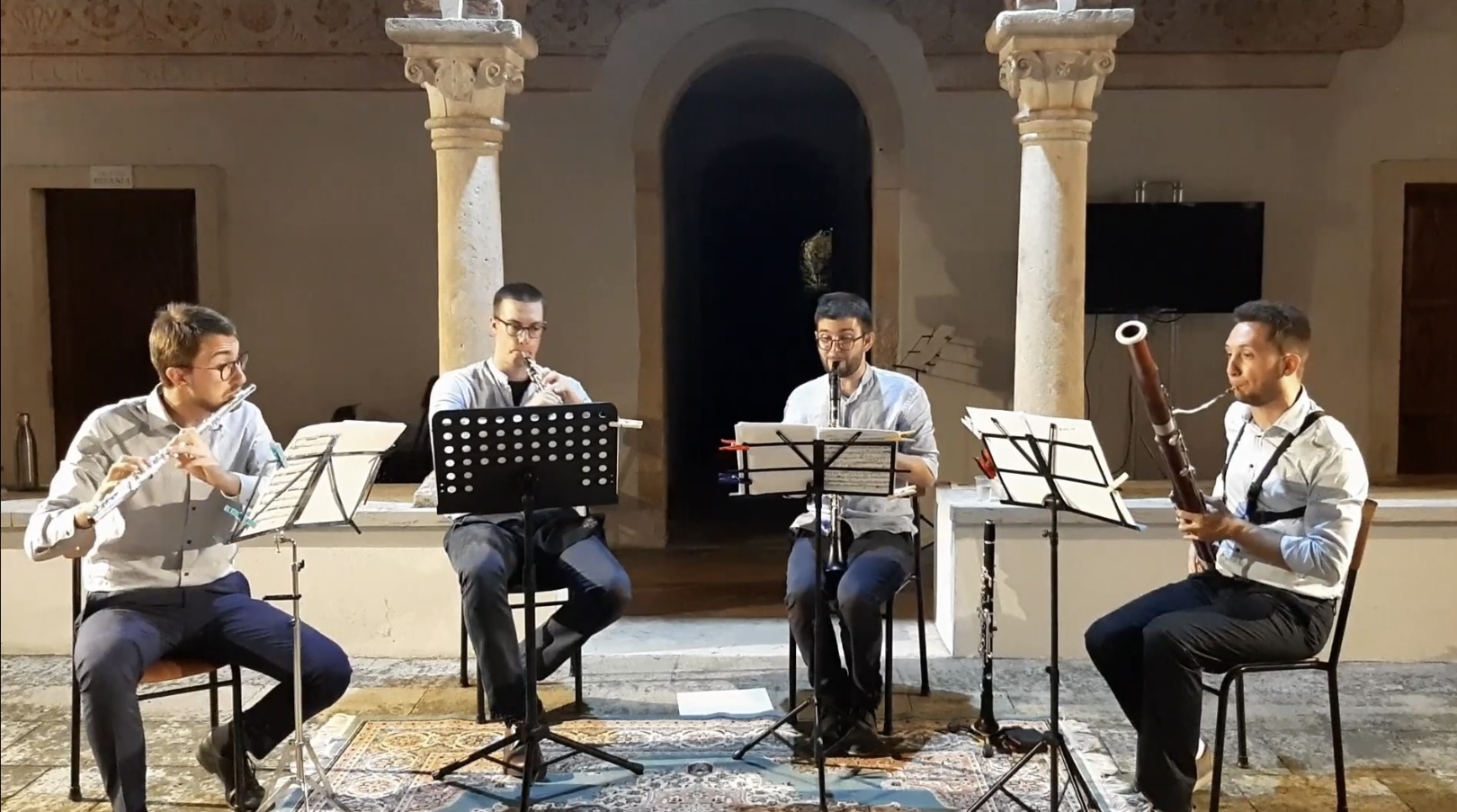
In the last article, we mentioned the oboe in the woodwind quartet and introduced it. I believe you have understood the characteristics of the oboe and woodwind quartet. Flute is mainly used for the tenor part melody in the woodwind quartet. The timbre is very clear and lively. In the last blog, we compared the oboe to a "lyrical soprano", and the flute to a "coloratura soprano", which is enough to show the public affection and appreciation for the flute.
T. Nagata: Sonatine for Woodwind QuartetEnsemble Neuma:https://youtu.be/AkY1qWx4KQA

Recently, Six Months Rebellion Music has also received a lot of inquiries from parents: What instruments are light and can be played with less effort? Is there an instrument that is suitable for children to learn and easy to play? Are there any instruments that can be played by children at the age of 6? Many parents are still consulting children's flute, etc. In today's article, we will continue to introduce the flute, which is the musical instrument of the woodwind quartet and acts as the treble melody.
Flute:

Flute is a metal instrument consisting of a mouthpiece, a flute body and a flute tail. At present, the main material for making musical instruments is copper. Although musical instruments are mainly made of metal materials, we will classify flute as woodwind instrument according to the way of flute’s sound production.
At the same time, flute is also an important part of modern orchestral instruments. It is the main high pitched melodic instrument in modern orchestral music, chamber music and orchestra and occupies a significant part. In the international music world, it can be called "the world's three greatest solo instruments" together with piano and violin, thanks to its attractive timbre, which makes flute more and more popular.
In fact, as early as Haydn's time, flute has become an indispensable part of the orchestra. Composers we are familiar with, such as Mozart, Beethoven, Bach, Debussy and others, have written many concertos, fantasies, variations, solo music, etc. for the flute, and some composers have adapted flute music to clarinet, oboe and bass. Although flute also has different tones and categories, at present, we still focus on the daily practice and learning of flute in C key.
The sound production of flute mainly means that the player needs to blow the breath into the hole on the mouthpiece. After blowing the breath into the instrument, the air flow will vibrate and collide inside the instrument to produce different sound effects. We require flute players to have very skilled playing techniques. If the breath is not stable enough, it will lead to music breaking or a sense of instability, and even affect the timbre of our performance.

The music it plays usually has a certain sensitivity, which can express the different feelings and thoughts of the performer. Of course, flute also has very distinctive characteristics and outstanding performance in quartet or orchestra. Generally speaking, it will be performed for some flexible, lively or emotional sections. Its voice is clear, bright, soft and has a very wide range, which can make people feel comfortable and relaxed. And most of the pieces played by flute are full of gorgeous playing skills, and they are the undertakers of the main melody in the ensemble and orchestra.
Reicha Sinfonico for 4 Flutes, Mvt.1Galway,Langevin,Bouriakov,Hoskuldssonhttps://youtu.be/DOUb9cBdkIM
Bass area: The tone is rich, full and slightly hoarse, especially when playing weakly, it is very gentle and soft, just like the moonlight.
Mid tone area: It is bright, soft and melodious, which can perfectly show the timbre characteristics of the flute and play more lyrical music parts.
High pitch area: very loud, crisp, high pitched and sharp, with strong penetration. It is often used to express the natural scenery, high mood and imitate birds and other animals. However, the high pitch area of the flute is not good at weak playing, and its extreme high pitch timbre is relatively dry.

Generally speaking, a flute is about 62cm long and requires both hands to hold the instrument for playing. However, many young students, especially those under the age of 10, have short arms, so it is very difficult to learn and play. Elbow flute is a good solution to this problem. The curved mouthpiece effectively shortens the distance between the mouthpiece and the keys. Therefore, even children under 10 can play easily. When you buy musical instruments, you can choose according to your own needs.
JINXIN Closed Hole Flutes C 16 Keys Silver Plated Flute Instrument for Beginner Kids Student with case,with U shaped Flute Head Joint Headioint Mouthpiece:https://www.sixmonthsrebellion.com/products/jinxin-closed-hole-flutes-c-16-keys-silver-plated-flute-instrument-for-beginner-kids-student-with-case%EF%BC%8Cwith-u-shaped-flute-head-joint-headioint-mouthpiece





